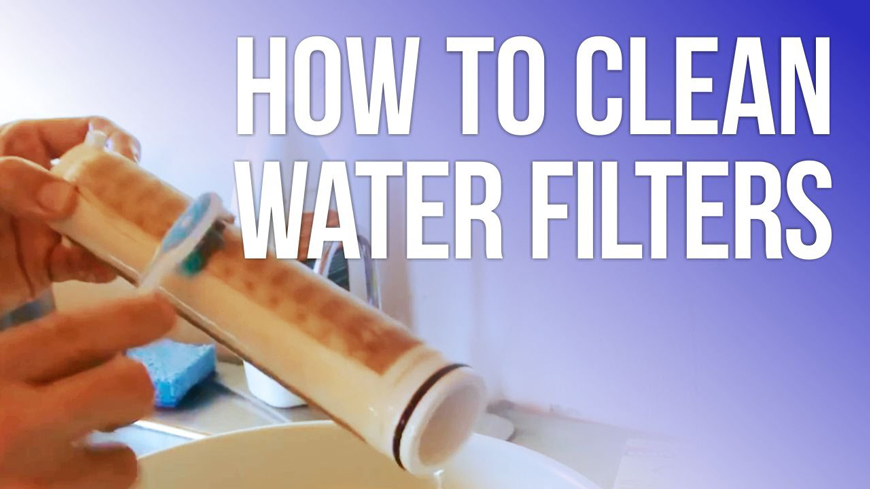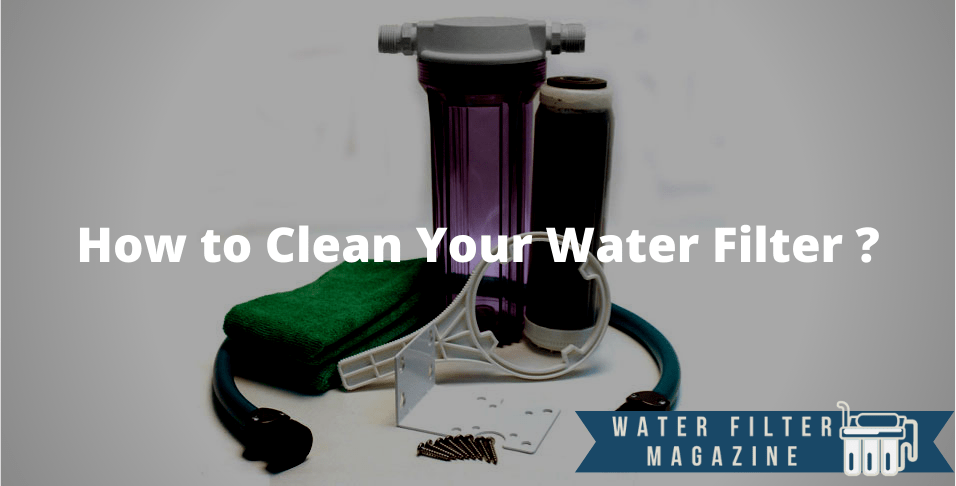There are many types of water filters used for the different methods through which water can be cleaned of contaminants and softened of hard minerals. Some of these filters can be cleaned and others just have to be replaced.
When it comes to whole house water filtering some filters can be cleaned and reused. If it is a filtering system you are using, you can take the time to clean your water filters and reuse them before they get to the state where you have to dispose of them and throw them away. Have a look at this high-quality whole house water filter guide to find out more about these methods.
A whole-house filtering system most commonly uses a pleated filter. Such filters are made of polyester, paper, or cotton folded to look like an accordion, which gives it more surface area and so allows the filter to absorb more particles. The “accordion” is housed in a cardboard frame.
The cleaner the water coming to your supply lines is, the slower your filter will get dirty, and vice versa the dirtier it is, the faster the filter will get dirty and start failing its job. You can tell it is dirty because it changes its white color to shades of brown. The darker it is, the dirtier.
Here Are the Proper Steps to Clean Your Water Filter
 To clean your pleated filter, you first have to prepare a solution with Oxalic acid and water. The acid you can buy from a store or online without a problem. The advisable proportions are 62.5 grams of oxalic acid per gallon of water. The best option is to use a tube container (a gallon or 3.785 liters) with a screw-on cap, to make sure it is safe from spilling or causing any other harm.
To clean your pleated filter, you first have to prepare a solution with Oxalic acid and water. The acid you can buy from a store or online without a problem. The advisable proportions are 62.5 grams of oxalic acid per gallon of water. The best option is to use a tube container (a gallon or 3.785 liters) with a screw-on cap, to make sure it is safe from spilling or causing any other harm.
This solution can be reused up to four or five times, again depending on the dirt level. What is important to mention here is an easy way to dispose of the no-good solution, once you get to that point. If we are talking about a gallon, then two teaspoons of baking soda will do the job. Just pour them in the tube, give it a swirl or light shake. It will neutralize whatever acid is left and you can safely throw it down the toilet or sink. This will not cause any harm to your plumbing lines.
Once you have prepared the solution you can start with the actual procedure. Shut down the main water valve. These filters are usually housed by a plastic cup of a sort, which is wound onto a top, so it holds it. At the top of the housing, there is usually a depressurizing button, which you have to press before you can open the housing.
Once you press it there will be some water that will squirt out from around the button. After putting a bucket or some other similar container underneath (to catch the water that might spill from the housing) you can unwind the housing. There is usually a rubber ring for insulation at its mouth, which you can take out and also wash. If you want to get as much off as possible from the filter, before you soak it in the acid you will have to spray it down with water that has a little bit more pressure. Hose it down, so to say. The result is instantly visible. You will waste more water, but you will preserve the oxalic acid solution for reuse.
Once you’ve done the above, place the dirty filter inside the housing. Fill it up (fill in on the inside of the filter until the entire housing is filled up) with the already prepared solution. Soak it for at least fifteen minutes or more. You can monitor it to see if it has become clean and then take it out. Rinse the filter and the housing thoroughly. Once the filter is dry you can reuse it.
Can I Clean Ceramic Filters?
Another type of filter is the ceramic one. Their surface is ceramic, and their membrane is filled with activated carbon, for example. If it is a ceramic filter you are aiming to clean, then you will need to do some scrubbing. The procedure is somewhat easier than with pleated filters.
First, you have to shut down the main water valve, then take the filter out of the housing. Using a thin scrub, usually available in any hardware store, start scrubbing the filters’ surface under a light water flow. The result is instantly visible because you will notice how the scrubbing makes the surface turn white again.
When you take it out it will be light or dark brown. Once you’ve scrubbed it thoroughly until it gets all white you can get to cleaning the housing. For the housing, you can use simple soapy water as well as a degreaser, for example. If it is a degreaser you should spray and leave it be for five minutes, then just rinse it. Ceramic filters can last up to six months if they are used with a moderately dirty water supply. The dirtier the water the more often you will have to clean the filter.
This leads to a shorter lifespan not only because of the buildup in the activated carbon but because the more you scrub the ceramic surface the thinner it gets. Some countertop water filtering units use such ceramic filters, and this gives them even more convenience. Check out this review of top-rated countertop water filters to get some more information.
One nice perk about these installations is that you can take the unit anywhere you go with you and use it there. Just hook it up to the faucet at the beach house, fill up your bottle, and go for a run on the beach.
The activated carbon filter is known as unbeatable when it comes to getting rid of the odor. If you are using such a filter in a big quantity, then there is a way of cleaning it. It is an effort but has a very good result and saves you money. The first thing to do is wear a mask because ash might occur. You need a container for the cleaning procedure.
The size is as per your needs. Fill it up with water, the warmth of which must be thirty degrees Celsius or eighty-six Fahrenheit. Slowly add the carbon to the water and enjoy watching the separation process. The dirt flows up and the cleaned activated carbon goes to the floor of the container. Using a whisk start stirring. Make sure you stir up the carbon on the bottom. While stirring bubbles will form and you will see grease-like stains float on the top.
When you’ve stirred a few times wait out all the bubbles to pop. Now you have to clean out the grease-like stains, which you can do using a kitchen roll (paper towel). Just drag it across the surface of the water and you will see all the grease has stuck to the kitchen roll. Neatly clean out the sides of the container on the top as well. Once you can’t see any more stains in the water you are done. Pour out the water slowly. All the good carbon will remain at the bottom of the container, anything that is floating is no good so you can let it flow out along with the dirty water. Rinse out with clean water the leftover carbon and it is ready for drying. You can dry it in the oven for two hours at two hundred degrees Celsius (392 Fahrenheit). You will have to put it in a net-like container. Every fifteen minutes take it out and give it a shake. Let it cool and you can start reusing it.
All this effort might not be to your liking, so if you don’t want to clean filters but simply replace them you can just turn to a water ionizer. This review of top-quality water ionizers will guide you through all the best options. Testing the water before you decide on the filtration method is always a good approach because it will give you information on the quality of your water supply.
Go to our website for reviews of top-rated products like the best dishwasher detergents for hard water or top-rated UV filtration systems!

